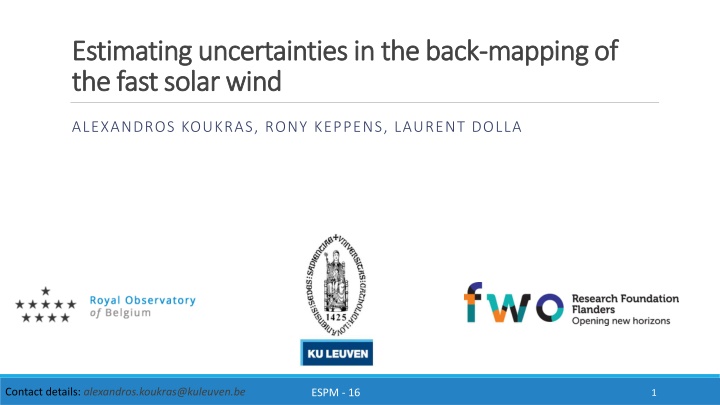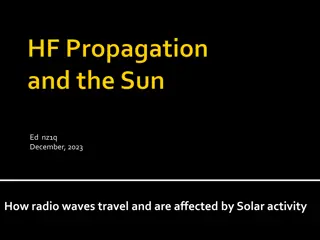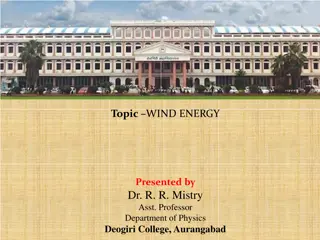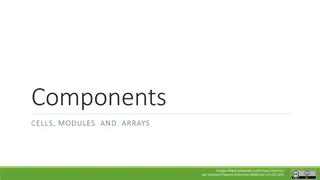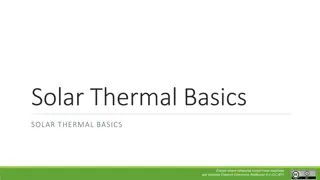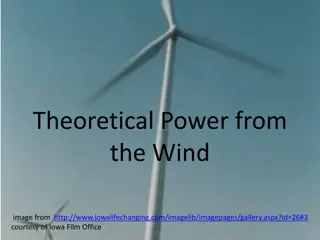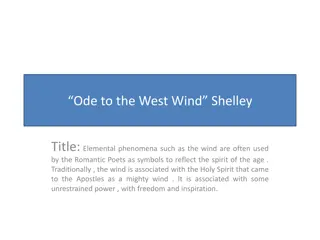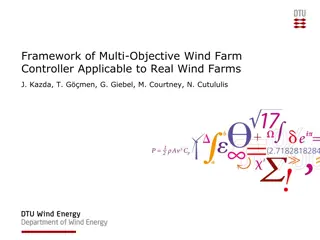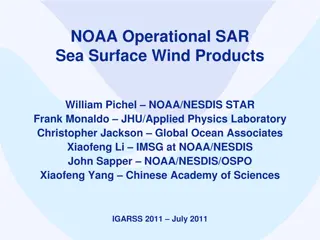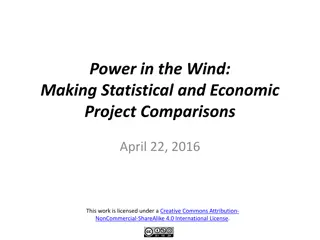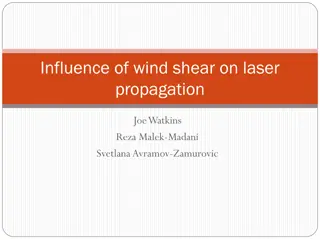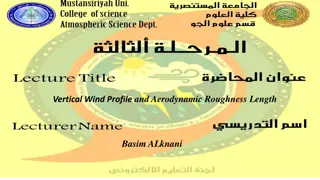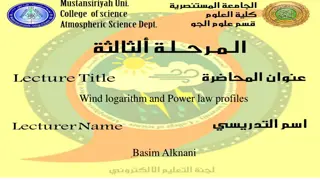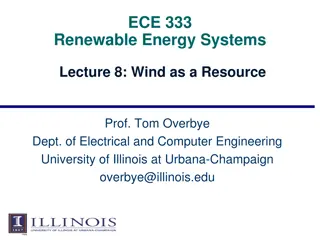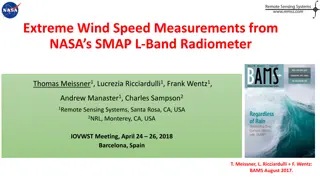Estimating Uncertainties in Solar Wind Back-Mapping
Solar wind back-mapping involves tracing the origin of fast solar wind streams by combining in-situ and remote observations. This process requires addressing sources of uncertainty such as radial velocity profiles and magnetogram noise to accurately locate the solar wind source region.
Download Presentation

Please find below an Image/Link to download the presentation.
The content on the website is provided AS IS for your information and personal use only. It may not be sold, licensed, or shared on other websites without obtaining consent from the author.If you encounter any issues during the download, it is possible that the publisher has removed the file from their server.
You are allowed to download the files provided on this website for personal or commercial use, subject to the condition that they are used lawfully. All files are the property of their respective owners.
The content on the website is provided AS IS for your information and personal use only. It may not be sold, licensed, or shared on other websites without obtaining consent from the author.
E N D
Presentation Transcript
Estimating uncertainties in the back Estimating uncertainties in the back- -mapping of the fast solar wind the fast solar wind mapping of ALEXANDROS KOUKRAS, RONY KEPPENS, LAURENT DOLLA Contact details: alexandros.koukras@kuleuven.be ESPM - 16 1
Introduction What is solar wind back-mapping? o From S/C to solar surface o Ballistic mapping + Magnetic mapping o Magnetic topology from PFSS extrapolation Why we want to back-map the solar wind? o Locate the source region of the solar wind o Linkage analysis: combine in-situ and remote sensing observations 4 Events of fast solar wind stream o Coronal holes at low latitudes o CHs with different morphologies o Sampling over different phases of the solar cycle Peleikis et al. 2017 ESPM - 16 2
Sources of uncertainty Radial velocity profile in ballistic mapping Source surface height Magnetogram noise Significant effect Uncertainty in measured solar wind velocity Uncertainty in spacecraft position Small effect ESPM - 16 3
Velocity in ballistic mapping Typical approach in literature: radial solar wind velocity = constant We create custom velocity profiles based on a parametrization of analytical approximations of the Parker transonic solution (small/large distances) Constrained by the measured velocity at 1 AU and by UVCS observations near the Sun (Miralles et al. 2004, Dolei et al. 2017, Bemporad 2017) This way we can examine the 2 extreme cases: o v = constant -> shortest travel time o v = velocity profile -> longest travel time Event 4 Average uncertainty (Source Surface Height=2.5 Rs): Lon: 0.30 0.33 (deg) Lat: 0.48 0.61 (deg) Event 4 ESPM - 16 4
Event 4 Source Surface height Compute the solar surface position (lon-lat) for every back-mapped point in the fast solar wind stream, for SS height: 1.5-3.5 Rs Select only the points that connect to the coronal hole The standard deviation of the positions of the selected points provides the associated uncertainty Average uncertainty: Lon: 1.99 0.34 (deg) Lat: 3.07 0.42 (deg) Event 4 ESPM - 16 5
Event 4 Magnetogram Noise Disturb input magnetogram by adding Gaussian noise 50 noise realizations per back-mapped point (SS height=2.5Rs) For every back-mapped point, calculate the difference with the no-noise position. The standard deviation of these differences is the associated uncertainty. Average uncertainty: Lon: 7.91 3.49 (deg) Lat: 13.3 4.83 (deg) Sigma=10 G ESPM - 16 6
Conclusions Analysis still in progress Flexible framework that can investigate in depth multiple sources of uncertainty Initial evidence show case dependence Different uncertainty estimates for longitude and latitude A general uncertainty estimate (per source) can be derived from all events o Example for ballistic velocity General Estimate Event 1 Event 2 Event 3 Event 4 Longitude (deg) 0.82 0.39 0.18 0.3 0.42 0.24 Latitude (deg) 0.28 1.21 0.54 0.48 0.63 0.35 Similar accuracy with the Magnetic Connectivity Tool (IRAP, Rouillard et al. 2020), but with ability to estimate uncertainty per source ESPM - 16 7
Comparison with Connectivity Tool (IRAP) Similar accuracy Potentially better precision Identification of uncertainty per source ESPM - 16 8
Additional material for slide 4 The custom velocity profiles are controlled from 2 free parameters One is the measured velocity in-situ (1AU or Earth), which imposes that they should reach this speed at this distance The next is the rs variable, which controls the shape of the velocity profile close to the Sun, and essentially the location of the sonic point ESPM - 16 9
Additional material for slide 6 First results show that the extrapolation is very sensitive to the initial conditions Tested multiple noise levels ESPM - 16 10
